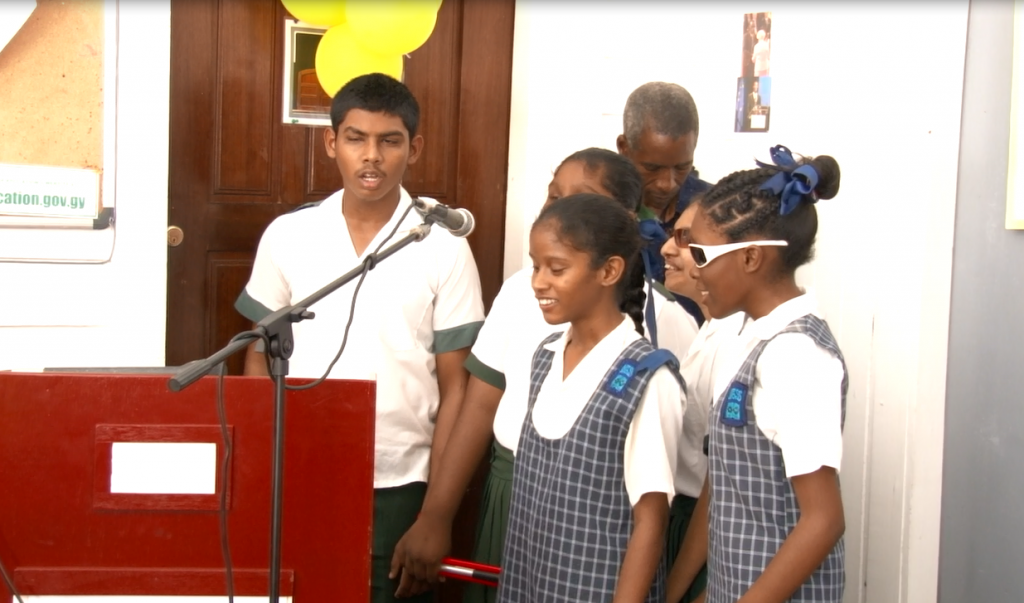
The Special Education Needs Unit of the National Centre for Education Research Development (NCERD) Thursday held an outreach activity to commemorate Blindness Awareness Month, which is observed every year in May.
The outreach at NCERD’s office in Kingston, Georgetown saw a number of activities to raise more awareness and foster a wider understanding, acceptance and respect for the blind and visually impaired population.
A number of primary and secondary schools came out on Thursday and interacted with fun learning games.
Deputy Chief Education Officer (DCEO) Ingrid Trotman said blind or visually impaired persons are sometimes much more skilled and talented than those with 20/20 vision.
“There are many of us who are not sightless nor do we have less than 1/10, yet we are blind to many things,” Trotman said.
The DCEO further said, “Today as we celebrate Blindness Awareness Month 2019, we need to applaud such persons in this category and try to learn something from them; we need to see things from each other’s perspective.”

Visually Impaired Educator Roy Maynard spoke about the history of integrating blind and visually impaired students into mainstream education in Guyana.
“The earliest efforts at special education in Guyana for the hearing and visually impaired started in the early 60’s and was managed by the Red Cross Movement in partnership with the Government of Guyana.”
Children with disabilities were provided for at that time in a residential hospitable institution, managed by the Ministries of Health and Education along with the Red Cross Society. The institution is now the Ptolemy Reid Rehabilitation Centre.
“On 8th May, 1968 the David Rose School for the Handicapped was established, this was an expansion of the effort to cater for the needs of the physically and mentally challenged in Guyana,” Maynard said.
In 1978 a pilot project was launched by the Ministry of Education that saw the integration of two visually impaired students enrolling into the North Georgetown Secondary School.
“The success of this initial programme encouraged advocates of the project to push for complete integration,” Maynard said.
Schools that followed to accommodate visually impaired students included St Angela’s Primary, St. Agnes Primary and the St Roses High School.
The programme of integration was funded by the Caribbean Council for the Blind, the Royal Canadian Society for the Blind to train educators to teach children with blindness in Guyana.
Some of the booths at the outreach included the National Commission on Disability which sensitized persons on the disability act while the Blindness and Visually Impairment section had an Information booth. The Ministry of Public Health also provided on the spot eye exams.






